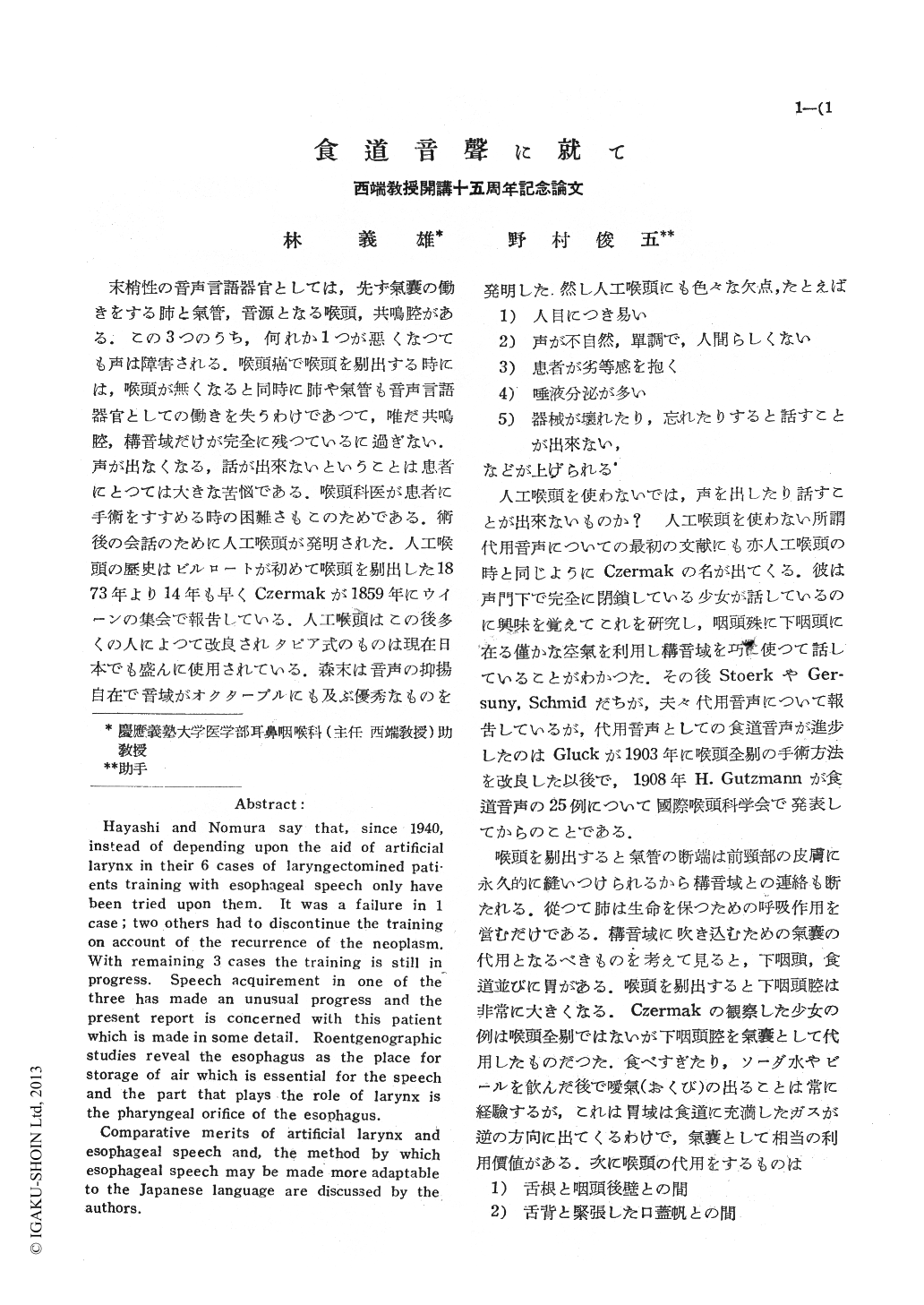- 有料閲覧
- 文献概要
- 1ページ目
末梢性の音声言語器官としては,先ず氣嚢の働きをする肺と氣管,音源となる喉頭,共鳴腔がある.ての3つのうち,何れか1つが惡くなつても声は障害される.喉頭癌で喉頭を剔出する時には,喉頭が無くなると同時に肺や氣管も音声言語器官としての働きを失うわけであつて,唯だ共鳴腔,構音域だけが完全に残つているに過ぎない.声が出なくなる,話が出來ないということは患者にとつては大きな苦悩である.喉頭科医が患者に手術をすすめる時の困難さもこのためである.術後の会話のために人工喉頭が発明された.人工喉頭の歴史はビルロートが初めて喉頭を剔出した1873年より14年も早くCzermakが1859年にウイーンの集会で報告している.人工喉頭はこの後多くの人によつて改良されタピア式のものは現在日本でも盛んに使用されている.森末は音声の抑揚自在で音域がオクターブルにも及ぶ優秀なものを発明した.然し人工喉頭にも色汝な欠点,たとえば
1)人目につき易い
2)声が不自然,單調で,人間らしくない
3)患者が劣等感を抱く
4)唾液分泌が多い
5)器械が壊れたり,忘れたりすると話すことが出來ない,
などが上げられる.
Hayashi and Nomura say that, since 1940, instead of depending upon the aid of artificial larynx in their 6 cases of laryngectomined patients training with esophageal speech only have been tried upon them. It was a failure in 1 case;two others had to discontinue the training on account of the recurrence of the neoplasm. With remaining 3 cases the training is still in progress. Speech acquirement in one of the three has made an unusual progress and the present report is concerned with this patient which is made in some detail. Roentgenographic studies reveal the esophagus as the place for storage of air which is essential for the speech and the part that plays the role of larynx is the pharyngeal orifice of the esophagus.
Comparative merits of artificial larynx and esophageal speech and, the method by which esophageal speech may be made more adaptable to the Japanese language are discussed by the authors.

Copyright © 1951, Igaku-Shoin Ltd. All rights reserved.


